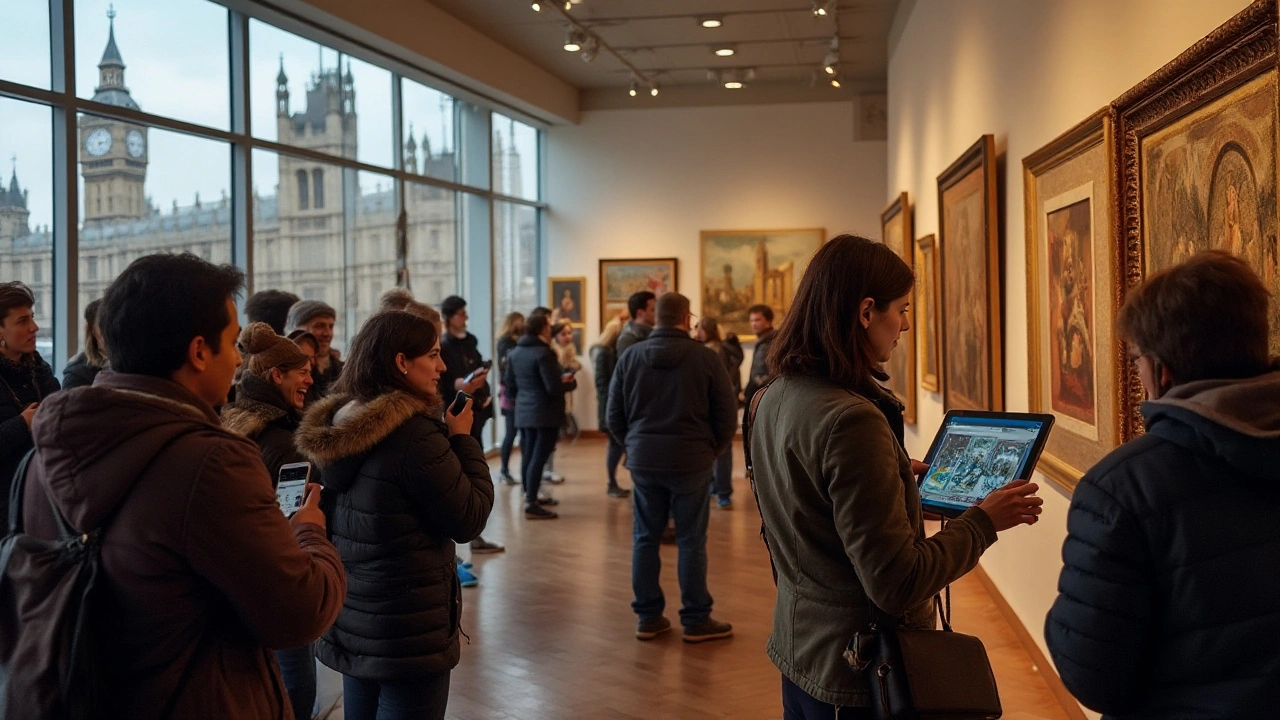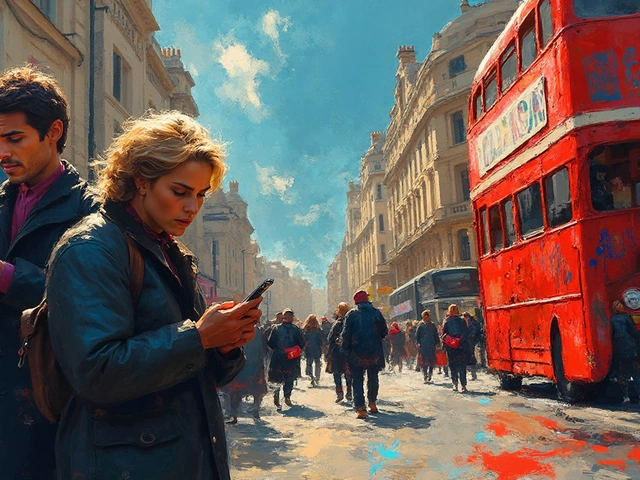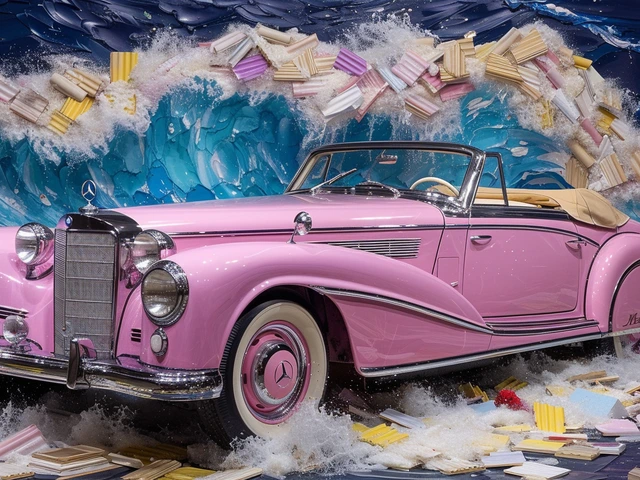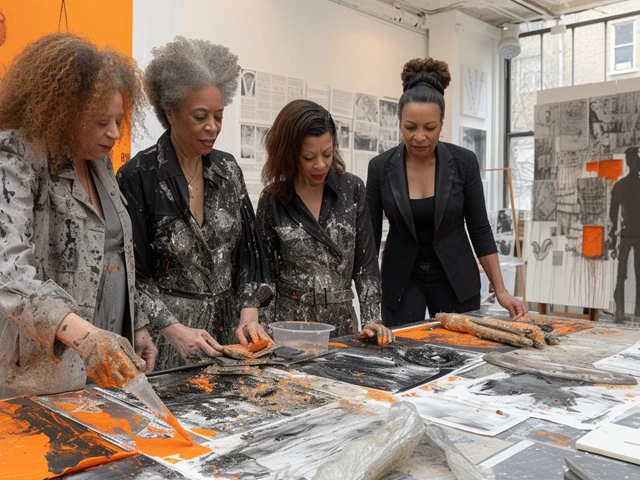Digital media is reshaping contemporary art in ways that were unimaginable just a few decades ago. It's funny to think about how artists have long searched for novel mediums to express their ideas—now, technology offers possibilities limited only by one's imagination. In recent years, there's been a significant shift as artists harness digital tools to create, exhibit, and communicate their work to a global audience.
This transformation isn't just about new techniques; it's about expanding the very definition of art itself. Moving from traditional practices to digital forms, artists are blending disciplines and innovating with every keystroke. Whether it's through motion graphics, virtual reality installations, or interactive web-based art, the personal and universal impact is undeniable.
- Introduction to Digital Media in Art
- Transformations Brought by Technology
- Notable Digital Art Forms
- Impact on Artists and Audiences
- Challenges and Opportunities
- Future Prospects of Digital Art
Introduction to Digital Media in Art
The advent of digital media in the realm of contemporary art signifies a groundbreaking era, embracing the intricate blend of art and technology. If you look back just a century, the mere idea of creating art with digital tools would seem like a science fiction tale. Yet today, artists globally are adopting digital platforms with zeal, pushing the boundaries of creativity in breathtaking ways. This profound shift not only signifies the evolution of art but also transforms how it communicates with audiences. As traditional methods mingled with technological prowess, a newfound flexibility emerged, allowing for endless reinterpretations and expressions across cultural and geographic boundaries.
The transformation brought about by digital media isn't merely about utilizing new tools; it's about reimagining the very experience of art. This fusion of art and technology has created a new language that speaks to an increasingly interconnected world. Virtual exhibits, online galleries, and digital installations are now commonplace, allowing artists' work to transcend physical constraints and access global markets. Platforms like Instagram and DeviantArt amplify this reach, turning artists into influencers and consumers into curators. The impact is not just superficial; it's re-defining the core of art's role in society.
One of the most fascinating aspects of this digital revolution is the degree of interactivity it introduces. Traditional art often requires passive observation, yet digital art invites active participation. Whether through augmented reality (AR) experiences, where viewers step into virtual landscapes, or interactive installations that respond to touch and movement, the relationship between art and its audience is dynamically reshaped. A renowned digital artist once noted, "In the digital realm, art becomes a dialogue—an ever-evolving conversation between the artist and their global audience, collapsing the distance between creation and perception." Such interactions enrich the artistic process, bringing forth fresh interpretations and emotional depths.
Moreover, the democratization of art creation has never been as accessible as it is today. Anybody with a computer or a smartphone now has the potential to be both a creator and critic. Digital tools like Photoshop, Illustrator, and even mobile apps provide an entry point for aspiring artists to experiment and develop their own unique styles. This democratization is empowering a diverse range of voices, previously marginalized by conventional art infrastructures. It embraces an inclusivity that reflects the myriad experiences and stories that make up our world. This evolution is not without its challenges, of course. The very accessibility that drives innovation also raises questions about originality and the value of art in its physical form.
In the next sections of this article, the conversation will navigate through transformations brought by technology, the impact on artists and audiences, and the exciting future prospects this dynamic landscape holds for art enthusiasts around the globe. As we delve deeper, you'll see how the embrace of digital media is redefining the cultural tapestry of our times, enriching the art world with colors that extend beyond the traditional, carving paths into uncharted territories.
Transformations Brought by Technology
The embrace of technology has dramatically reshaped the landscape of contemporary art, leading to revolutionary developments in both creation and exhibition. As digital tools become increasingly sophisticated, artists are finding new ways to express their visions, play with perceptions, and communicate ideas that transcend traditional boundaries. The integration of digital media into art has invigorated the creative process, offering limitless possibilities and blending various genres into cohesive new forms. Digital art, often dynamic and interactive, captivates audiences by engaging them in ways traditional art rarely could.
The emergence of digital artists has been fueled by technological innovations such as virtual reality (VR), augmented reality (AR), and artificial intelligence (AI). Advanced software programs allow artists to create immersive environments, while AI has started to play a role as a collaborator, offering suggestions and insights that challenge conventional modes of thinking. These technologies provide novel experiences, from walking inside a Van Gogh painting to engaging with art pieces that respond to viewer movements and sounds. Such transformations expand not just the mediums of art but also its scope and reach.
"Digital technology is the universal language if networks and algorithms are its grammar. Art is evolving into a collective experience that involves the interaction between audiences and algorithmic art," said Lev Manovich, a renowned digital culture expert.
Technology also revolutionizes how art is shared and consumed. The internet has become an expansive gallery, with platforms like Instagram and TikTok giving artists instant access to global audiences. This shift democratizes art appreciation, allowing people anywhere to view, critique, and share works without geographic or economic barriers. Such connectivity encourages a collaborative environment where ideas flow freely, fostering a dynamic exchange that can lead to unexpected and inspiring outcomes.
Moreover, technological progress has supported diverse art technology initiatives, like blockchain-enabled provenance tracking and NFT markets, which ensure artist compensation and work authenticity. These tools protect artists' intellectual property and allow for direct transactions between creators and consumers without intermediaries. While these advancements challenge traditional art institutions, they also present opportunities for more equitable systems that emphasize artistic integrity and innovation. Notably, sales of digital art in the form of NFTs have skyrocketed, reaching over $2.5 billion in just the first half of 2021 alone.
While it opens doors to unprecedented methods of interaction and expression, the technological transformation of art also raises questions about authorship, meaning, and the essence of what art can be. Discussions often center on authenticity: Can a digitally created piece hold the same emotional resonance as brushstrokes on canvas? In answering this, it becomes evident that digital media presents a paradigm shift where art does not merely exist to be looked at but invites viewers to play a part in its narrative. In digital spaces, art becomes an event; a live dialogue unfolding between creator and audience, continuously shaped by every viewer's unique engagement.
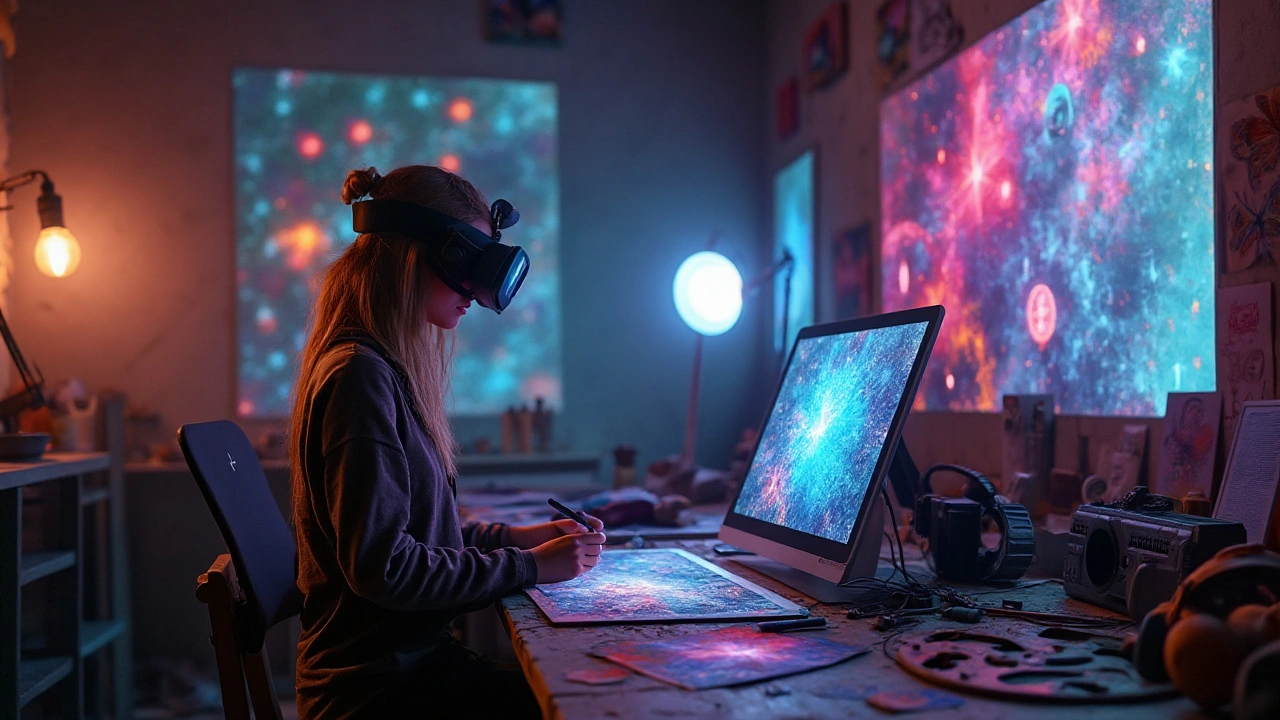
Notable Digital Art Forms
In the world of contemporary art, digital forms are steadily gaining prominence as they break the mold of conventional artistry. One can't help but marvel at how technology expands the toolkit of modern artists, making way for vibrant and diverse creative expressions. Perhaps the most captivating aspect of digital media in art is how it fosters new genres that blend traditional skills with modern innovations. For instance, digital painting, executed with graphics tablets and advanced software, allows artists to experiment with colors and textures without the limitations of physical paint. These digital canvases are pushing the boundaries of artistic imagination, giving rise to breathtaking works that evoke emotion and provoke thought.
Motion graphics and animation are instrumental in transforming static art into dynamic experiences. Artists who embrace these forms often find new dimensions where time and space merge to create immersive storytelling. Think about works that not only dazzle visually but also engage audiences interactively. By incorporating sound and motion, these digital artworks invite viewers into a multisensory journey that challenges perceptions of reality. This domain has also democratized art by making it more accessible through social media platforms and virtual exhibitions, allowing artists to reach a global audience. Often, emerging artists gain recognition through viral sharing of innovative animations that captivate millions.
"Art is the lie that enables us to realize the truth." – Pablo Picasso
Virtual Reality (VR) and Augmented Reality (AR) represent another exciting frontier where technology and art converge. Imagine stepping into a three-dimensional world where you can interact with the artwork around you — touch, move, and explore as if it were a living entity. Artists use VR to craft immersive experiences that draw in viewers, offering them roles as active participants rather than passive observers. Similarly, AR bridges the gap between the digital and physical realms, as digital information overlays in real-world settings to create profound visual experiences. These technologies are rapidly gaining traction, heralded as game-changers in the sphere of art technology.
Moreover, digital sculptures and installations often take center stage in galleries, utilizing 3D printing and multimedia elements to create captivating pieces that defy traditional constraints. These pieces can have intricate details and large-scale designs previously deemed impossible with classical methods. Artists create engaging art forms that communicate complex ideas through layers of meaning and interactive components. Not to forget, the surge of NFTs (Non-Fungible Tokens) has revolutionized the economics of art, allowing for the sale and ownership verification of digital creations. This concept draws in tech-savvy collectors, adding a new dynamic to the art market.
With such a wide range of digital art forms emerging, it's no wonder that the definitions of art and creativity continue to stretch and transform. These digital innovations grant artists the freedom to explore, experiment, and express like never before, often leading to groundbreaking works that captivate and inspire. As technology evolves, so too will the potential for new art forms, ensuring that digital media remains a vital and exhilarating component of contemporary art.
Impact on Artists and Audiences
Digital technology is a game-changer for artists, completely redefining the boundaries of what art can be. The power and reach of digital platforms have transformed how artists create and share their work. There's a certain freedom found in digital media that allows artists to experiment without the constraints of traditional mediums. With tools like digital drawing tablets, software like Adobe Photoshop, and even emerging AI technologies, the possibilities are limitless. Artists can explore concepts at a pace and scale that was previously impossible.
The digital era also implies the potential for increased visibility and connection with audiences around the globe. Social media channels enable artists to showcase their work to a massive audience without traditional gatekeepers like galleries or exhibitions. This truly democratizes art, putting the power back into the hands of creators. Not to mention, the use of digital platforms allows for interaction with audiences in real-time, offering immediate feedback and fostering a closer bond between artists and fans. This often leads to a more personalized experience for both parties involved.
The Changing Role of the Audience
The role of the audience is also shifting in this digital age. People are no longer just passive observers; they are active participants in the experience of art. The interactivity of digital media allows audiences to engage with art in ways unimaginable before. Virtual reality installations, for example, offer immersive experiences where viewers can virtually step inside, explore, and even interact with the art. This creates a more personal and engaging experience, making each visit unique. The digital realm brings art closer, often eliminating geographical or logistical barriers.
"We’re in an era where art truly becomes a dialogue," says Hal Foster, a noted art critic. "The boundaries between artist and audience have blurred, reshaping not only the perception but the very creation of art itself."
Despite these advantages, the shift to digital is not without its challenges. Artists must adapt to a constantly changing landscape, staying updated with the latest technologies and trends. Audiences, on the other hand, may struggle with the vast amount of available digital content, sometimes finding it overwhelming to discern quality amidst the noise. This balance between quantity and quality is a facet of the digital era that continues to evolve.
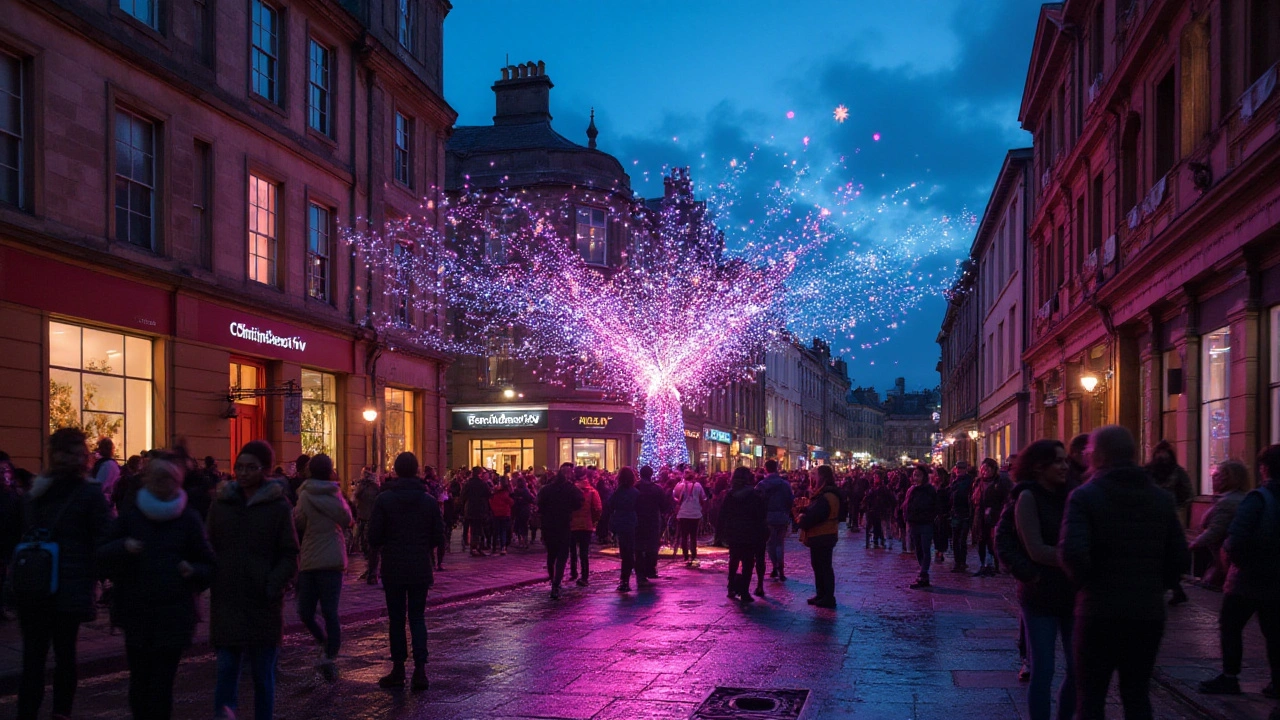
Challenges and Opportunities
The integration of digital media into contemporary art presents a fascinating paradox filled with both challenges and opportunities. One significant challenge lies in the ephemeral nature of digital art. Unlike traditional artworks that have managed to endure through centuries, digital art may become corrupted or obsolete as technology evolves. Preservation becomes a daunting task as formats change, posing a threat to the longevity of digital creations. Consequently, museums and collectors must continually adapt their approaches to ensure the safekeeping of these modern treasures.
On another note, the democratization of art through digital media is an opportunity most artists could only dream of in the past. Digital tools have provided artists with platforms to showcase their work without the need for intermediaries. Social media, online galleries, and virtual exhibitions widen the reach to audiences who may have been previously inaccessible. The digital space is opening doors for emerging artists to gain recognition, and in many cases, financial independence. According to a survey by Art Basel and UBS Global, online art sales reached an estimated $6 billion in 2023, highlighting the growing market for digital artists.
Technological Proficiency
However, the need for technical proficiency in digital tools can be daunting for some artists. Not every creative mind is inclined towards technology, and mastering new software can require significant time and effort. This creates a gap between artists who can or cannot afford the luxury to learn these tools. Nonetheless, this technological learning curve also brings the opportunity for collaboration between tech-savvy individuals and traditional artists who seek to expand their repertoire of skills. Partnerships between artists and programmers are increasingly common, merging technological prowess with creative genius.
There's also an ongoing debate about the authenticity and uniqueness of digital art. In a world where digital files can be replicated infinitely without loss of quality, the concept of an 'original' piece becomes blurred. However, this very challenge has led to the invention of blockchain technology and non-fungible tokens (NFTs) to verify authenticity and ownership. As Dr. Clare McAndrew notes in her report on The Global Art Market, "NFTs represent a breakthrough in offering digital works a status of singularity equivalent to traditional artworks." This technological innovation is turning the challenge of digital reproducibility into an opportunity for ensuring originality.
With the rapid evolution of technology, digital art is continuously breaking boundaries. Yet, it must be stressed that this fast-paced advancement also proves to be a double-edged sword. The pressure to constantly update skills and tools can be overwhelming, creating an environment where creators feel the need to chase technological trends rather than focus on artistic expression. But herein lies the opportunity for those who are quick to adapt. Artists who can navigate this landscape successfully often find themselves at the forefront of contemporary art movements, influencing trends and styles.
While challenges in digital art are certainly complex and often intimidating, the opportunities they present are equally empowering. As the relationship between technology and art deepens, artists are encouraged to explore and innovate like never before. Despite hurdles, the cultivation of a digital art community that fosters support, collaboration, and growth can transform barriers into stepping stones towards greater creative achievement.
Future Prospects of Digital Art
The future of digital art is incredibly exciting and filled with potential that can reshape our understanding of creativity. As technology continues to evolve at a rapid pace, artists are finding new ways to express their ideas and engage with audiences. One significant development is the emergence of virtual and augmented reality experiences, which allow creators to build immersive worlds that viewers can explore. This offers a level of interaction previously unheard of in the art world, blurring the line between creator and spectator. Moreover, as digital tools become more accessible, a wider range of voices and ideas will populate the field, democratizing art in ways never before seen.
It's not just about immersive experiences either. The rise of blockchain technology brings about the fascinating realm of NFTs (Non-fungible Tokens), which have taken the art world by storm. By utilizing blockchain, NFTs provide a new method for artists to sell and validate their work, ensuring authenticity and ownership are clear and transparent. This has opened new revenue streams for artists and allowed them to reach collectors directly, bypassing traditional gallery systems. Digital marketplaces for digital media are growing rapidly, attracting both established artists and newcomers, eager to venture into this new territory.
Cory Doctorow, a prominent technology advocate, once stated, "We're living in an age of surveillance capitalism." The sheer data these platforms utilize can lead to a personalized art experience like no other but can also bring ethical questions on privacy and data usage that need addressing.
Looking ahead, we anticipate the integration of AI and machine learning in the creation process will continue to expand. These tools enable artists to explore generative art, utilizing algorithms to create unique pieces that couldn't be achieved manually. Artists are beginning to collaborate with AI, treating them as co-creators rather than mere tools, which brings forth fascinating outcomes and new artistic styles. At the same time, understanding the balance between machine input and human creativity will play a crucial role in shaping the artistic landscape.
The contemporary art scene is also being influenced by the strides made in wearable technology and biofeedback devices. The potential for art to respond to the viewer's heart rate, movements, and even emotions opens up untapped possibilities for interactive installations. Such advancements could redefine how audience engagement is viewed, creating layers of interactivity and personalization that cater uniquely to each participant. This dynamic interaction could help bridge the gap between creator intent and audience interpretation, allowing art to adapt to its viewers in real-time.
Challenges exist, of course. Balancing technological advancement with artistic integrity remains a key consideration. The preservation of digital art, often ephemeral and reliant on current tech, poses hurdles that need strategic solutions. As tech evolves, ensuring artworks remain intact and accessible presents an ongoing concern. Yet, the resilience and adaptability of digital artists should not be underestimated—they have constantly evolved alongside tech, pushing boundaries and redefining what art can be.
In the end, the intersection of innovation and art promises to keep breaking new grounds in the years to come. Whether through embracing virtual tools, utilizing new selling methods like NFTs, or seamlessly integrating AI into the artistic process, the future prospects of digital art seem boundless. With each technological leap, there's potential for even more profound artistic expression, offering creators a canvas defined not by physical dimensions, but by imagination itself.

